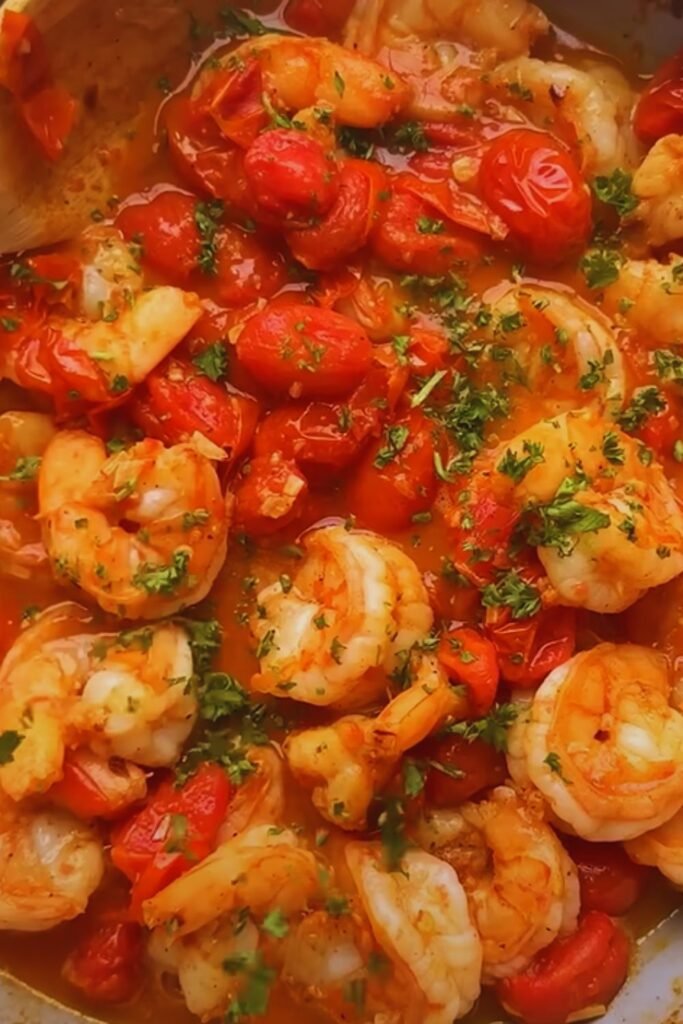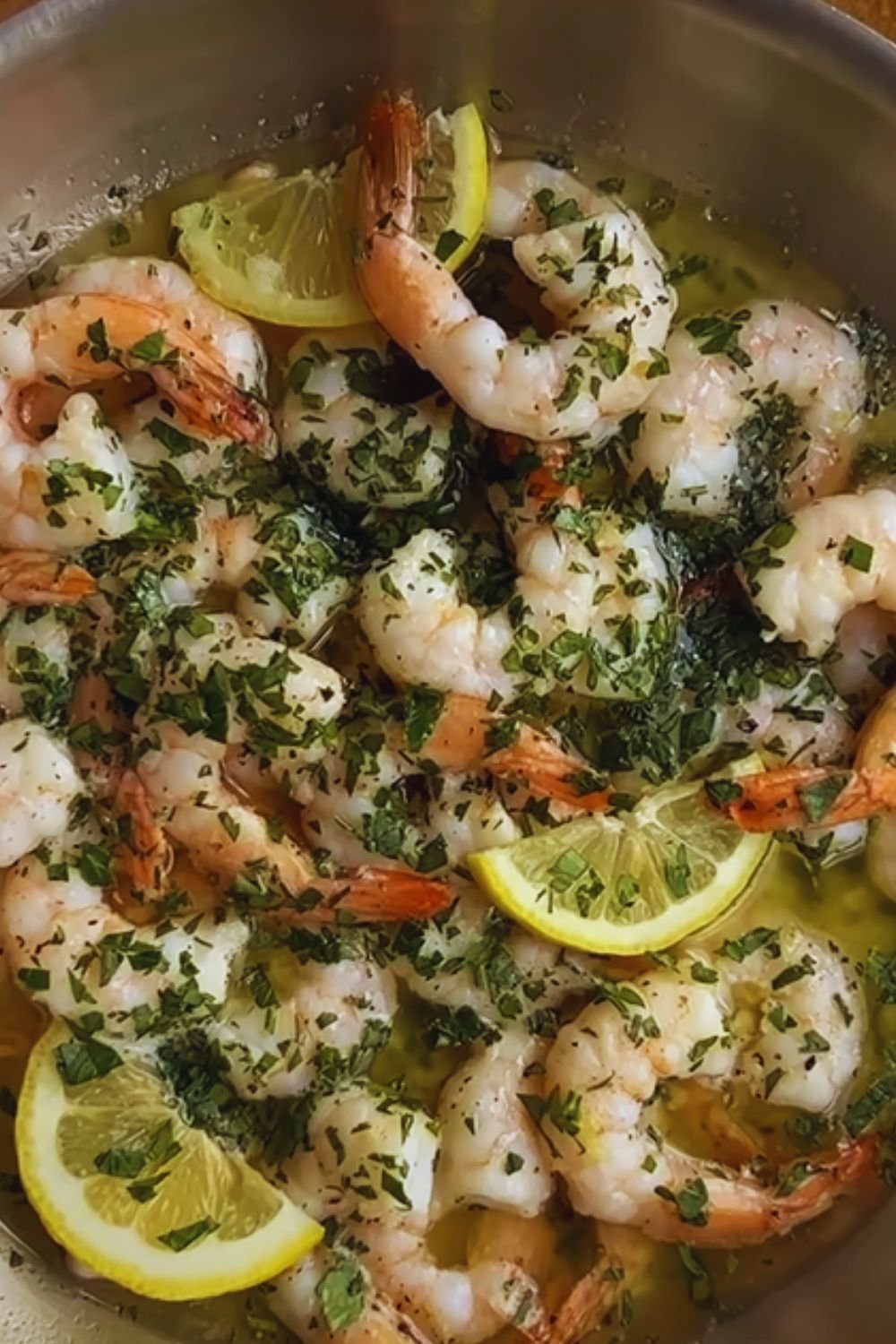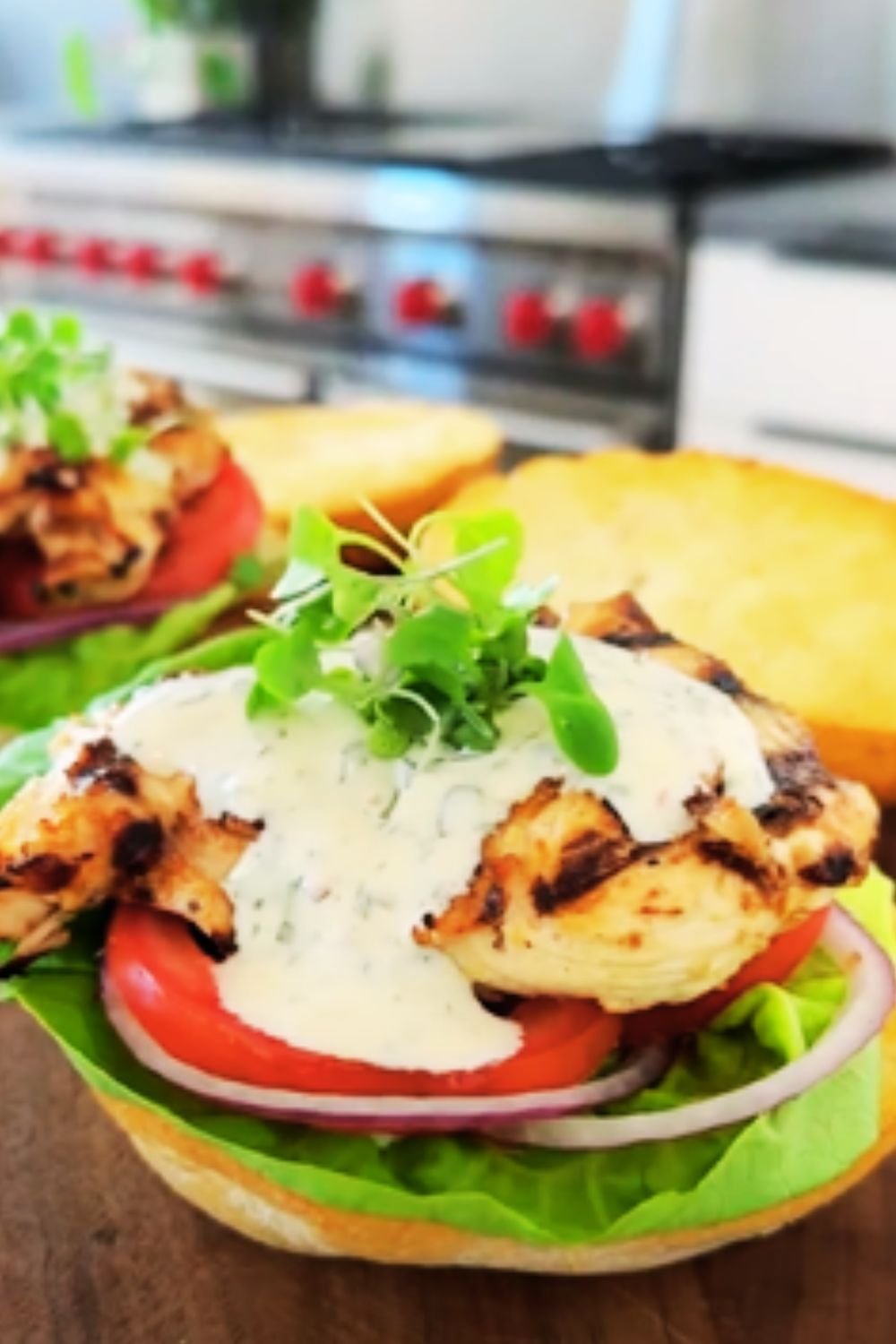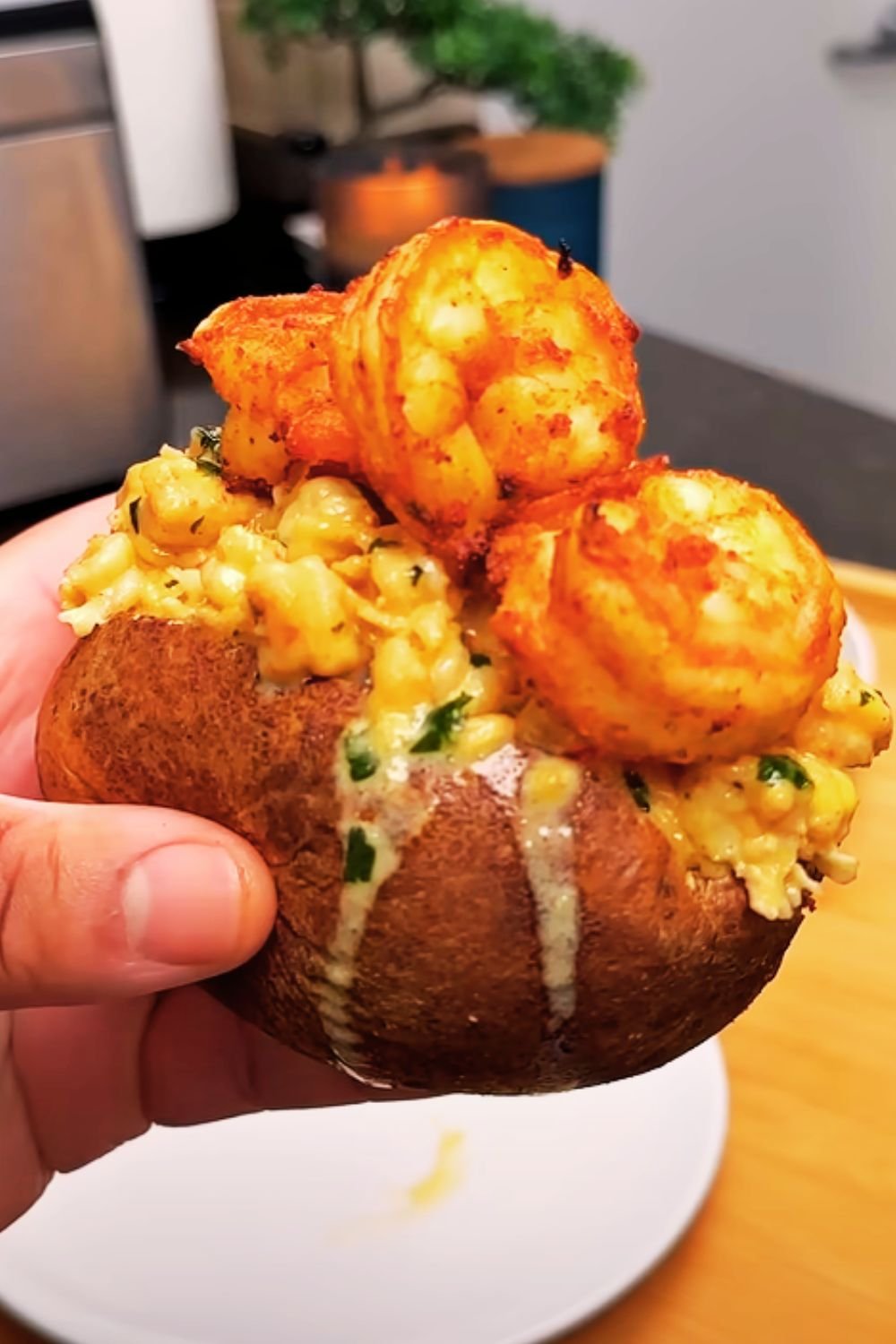There’s something magical about the combination of succulent shrimp, fragrant garlic, and al dente pasta that makes shrimp scampi an irresistible dish. As someone who’s spent years perfecting this Italian-American classic, I’m excited to share my wine-free version that doesn’t compromise on flavor. Traditional recipes often call for white wine, but I’ve discovered that you can achieve that same bright, complex taste profile without it. Whether you’re avoiding alcohol for personal reasons or simply don’t have wine on hand, this recipe delivers all the deliciousness you crave.
What Makes This Shrimp Scampi Special
Shrimp scampi is typically a simple yet elegant dish of shrimp cooked in a buttery, garlicky sauce with a hint of acidity and herbs. My version maintains all these beautiful flavors while substituting the wine with ingredients you likely already have in your kitchen. The result is a restaurant-quality meal that comes together in just 20 minutes – perfect for both weeknight dinners and special occasions.
I’ve spent years tweaking this recipe, focusing on building layers of flavor through proper technique and ingredient balance. The secret lies in properly sautéing the aromatics, getting the perfect sear on the shrimp, and creating a silky sauce that clings beautifully to both the seafood and pasta.
Ingredients Breakdown
Before diving into the cooking process, let’s examine each ingredient and its role in creating this delectable dish:
Main Ingredients
| Ingredient | Quantity | Function | Notes |
|---|---|---|---|
| Large shrimp | 1 pound (about 20-25 shrimp) | Main protein | Preferably 16-20 count, peeled and deveined with tails on for presentation |
| Linguine or spaghetti | 12 ounces | Base of the dish | Can substitute with angel hair or fettuccine |
| Unsalted butter | 4 tablespoons | Creates richness and sauce base | Divided use – some for cooking, some for finishing |
| Extra virgin olive oil | 3 tablespoons | Prevents butter from burning, adds flavor | Use high-quality oil for best results |
| Fresh garlic | 6 cloves, minced | Primary flavor component | Don’t substitute with jarred garlic |
| Chicken broth | 1/2 cup | Replaces wine, adds depth | Low-sodium preferred |
| Fresh lemon juice | 3 tablespoons (1 large lemon) | Provides acidity to replace wine | Fresh is essential, bottled lacks brightness |
| Fresh parsley | 1/4 cup, chopped | Freshness and color | Flat-leaf (Italian) preferred over curly |
| Red pepper flakes | 1/4 teaspoon (adjustable) | Subtle heat | Optional but recommended |
| Salt | 1 teaspoon, plus more for pasta water | Enhances all flavors | Kosher salt preferred |
| Black pepper | 1/2 teaspoon, freshly ground | Adds depth and complexity | Freshly ground has more flavor than pre-ground |
Substitutions and Alternatives
| Original Ingredient | Possible Substitution | Notes |
|---|---|---|
| Chicken broth | Vegetable broth | For a vegetarian option (though dish contains seafood) |
| Lemon juice | 2 Tbsp white wine vinegar + 1 Tbsp water | If no lemons are available |
| Fresh parsley | 1 Tbsp dried parsley | In a pinch, though fresh is much better |
| Linguine | Zucchini noodles or spaghetti squash | For a low-carb version |
| Shrimp | Scallops | Similar cooking time, different flavor profile |
| Butter | Ghee | For a slightly nuttier flavor |
| Red pepper flakes | Pinch of cayenne | More heat, use cautiously |
Essential Equipment
For best results, gather these kitchen tools before starting:
- Large pot for pasta
- Colander for draining
- Large skillet or sauté pan (12-inch preferred)
- Sharp knife for prep work
- Microplane or zester for lemon zest
- Cutting board
- Measuring spoons and cups
- Wooden spoon or silicone spatula
- Tongs for handling pasta and shrimp

Preparation Steps
Preparing the Shrimp
The quality and preparation of your shrimp significantly impact the final dish. Here’s my method for perfect shrimp preparation:
- If using frozen shrimp, thaw them completely by placing in the refrigerator overnight or using the quick-thaw method: place in a colander and run under cold water for 5-7 minutes.
- Once thawed, peel the shrimp, leaving the tails on if desired (they add flavor and make a nice presentation).
- Devein the shrimp by making a shallow cut along the back and removing the dark intestinal tract.
- Pat the shrimp completely dry with paper towels – this is crucial for getting a good sear.
- Season the shrimp with 1/2 teaspoon salt and 1/4 teaspoon pepper.
- Allow the seasoned shrimp to sit at room temperature for 10 minutes before cooking (but no longer than 15 minutes for food safety).
Preparing Other Ingredients
Proper mise en place (ingredient preparation) makes the cooking process smooth and efficient:
- Mince garlic finely and set aside.
- Zest the lemon before juicing it – the zest adds incredible aroma and flavor.
- Squeeze fresh lemon juice and strain out seeds.
- Chop parsley, separating stems from leaves (stems can be added earlier in cooking for flavor).
- Measure out broth, butter, and olive oil.
- Have all ingredients within arm’s reach of your cooking area.
Detailed Cooking Process
Step 1: Cook the Pasta
Properly cooked pasta is essential for this dish. Here’s how to achieve perfect al dente texture:
- Fill a large pot with water (at least 4 quarts) and add 1 tablespoon of salt.
- Bring to a rolling boil over high heat.
- Add pasta and cook for 2 minutes less than package directions indicate for al dente.
- Before draining, reserve 1 cup of pasta cooking water (this starchy water helps create a silky sauce).
- Drain pasta but do not rinse – the starch helps the sauce adhere.
Step 2: Cook the Shrimp and Create the Sauce
This is where the magic happens – developing deep flavors in layers:
- While pasta is cooking, heat a large skillet over medium-high heat.
- Add 2 tablespoons olive oil and 2 tablespoons butter.
- Once butter has melted and stops foaming (but before it browns), add the shrimp in a single layer.
- Cook shrimp for 1-2 minutes per side until just turning pink and starting to curl – they should be slightly undercooked.
- Remove shrimp to a plate, leaving juices in the pan.
- Reduce heat to medium and add remaining 1 tablespoon olive oil.
- Add minced garlic and a pinch of red pepper flakes, cooking for just 30 seconds until fragrant (be careful not to burn the garlic).
- Add chicken broth, lemon juice, and lemon zest, then increase heat to medium-high.
- Allow the liquid to reduce by half, about 3-4 minutes, stirring occasionally to scrape up any browned bits from the pan bottom.
- Add remaining 2 tablespoons butter and stir until melted and sauce is slightly thickened.
Step 3: Combine and Finish the Dish
The final steps bring everything together harmoniously:
- Return shrimp to the pan along with any accumulated juices.
- Add the drained pasta directly to the skillet.
- Toss everything together using tongs, coating the pasta and shrimp with sauce.
- If the sauce seems too thick, add reserved pasta water a few tablespoons at a time.
- Cook together for 1-2 minutes until shrimp are fully cooked and pasta is al dente.
- Remove from heat and stir in most of the chopped parsley.
- Taste and adjust seasoning with salt and pepper as needed.
- Transfer to a serving platter or individual plates.
- Garnish with remaining parsley and lemon wedges.

Troubleshooting Common Issues
Even experienced cooks encounter challenges. Here are solutions to common problems:
| Problem | Possible Cause | Solution |
|---|---|---|
| Rubbery shrimp | Overcooked | Cook shrimp just until pink and opaque; they continue cooking in residual heat |
| Watery sauce | Didn’t reduce enough | Allow sauce to simmer longer; add a teaspoon of cornstarch mixed with water if needed |
| Bland flavor | Insufficient seasoning | Add more salt, a squeeze of lemon, or a pinch of red pepper flakes |
| Pasta clumping | Sat too long after draining | Retain some pasta water and toss pasta frequently while preparing sauce |
| Burnt garlic | Heat too high | Cook garlic on medium heat and watch carefully; if burnt, start over as bitter flavor can’t be fixed |
| Greasy sauce | Too much oil/butter | Balance with more acid (lemon juice) or starchy pasta water |
Serving Suggestions
This shrimp scampi pasta makes a stunning centerpiece for any meal. Here’s how I like to serve it:
Complementary Side Dishes
- Simple green salad with lemon vinaigrette
- Roasted asparagus or broccolini
- Garlic bread or crusty Italian bread for sauce-sopping
- Caesar salad with homemade dressing
- Sautéed spinach with garlic
Beverage Pairings
- Sparkling water with lemon slices
- Iced tea with mint
- Italian sodas
- Lemonade
- Non-alcoholic sparkling cider
Presentation Tips
- Serve in warmed pasta bowls or on a large platter
- Arrange shrimp on top of pasta rather than mixed in for visual impact
- Add a light sprinkle of lemon zest on top just before serving
- Include extra lemon wedges on the side
- Consider a light dusting of high-quality Parmesan for non-purists (traditionalists avoid cheese with seafood)

Make-Ahead and Storage Tips
Shrimp scampi is best enjoyed fresh, but there are ways to prep ahead and store leftovers:
Make-Ahead Options
- Prepare shrimp (peel, devein, season) up to 12 hours ahead and refrigerate
- Measure and prep all other ingredients up to 4 hours ahead
- Cook pasta slightly firmer than al dente, toss with a little olive oil, and refrigerate up to 24 hours
Proper Storage
- Refrigerate leftovers in an airtight container for up to 2 days
- Store pasta and sauce separately if possible for best texture
- Do not freeze – the texture of both shrimp and pasta degrades significantly
Reheating Methods
- Stovetop: Add a splash of chicken broth, cover, and heat gently until just warmed through
- Microwave: Use 50% power in short increments with a damp paper towel cover
- Avoid reheating multiple times as shrimp will become tough
Nutritional Information
For those tracking their intake, here’s the approximate nutritional profile per serving (recipe serves 4):
| Nutrient | Amount | % Daily Value* |
|---|---|---|
| Calories | 485 | – |
| Total Fat | 22g | 28% |
| Saturated Fat | 9g | 45% |
| Cholesterol | 225mg | 75% |
| Sodium | 890mg | 39% |
| Total Carbohydrates | 42g | 15% |
| Dietary Fiber | 2g | 7% |
| Sugars | 1g | – |
| Protein | 31g | 62% |
| Vitamin A | 15% | – |
| Vitamin C | 25% | – |
| Calcium | 8% | – |
| Iron | 15% | – |
*Percent Daily Values are based on a 2,000 calorie diet.
Health Benefits and Considerations
This dish offers numerous nutritional advantages while being aware of potential concerns:
Health Benefits
- Shrimp provides high-quality protein with minimal calories
- Rich in selenium, iodine, and vitamin B12
- Contains beneficial omega-3 fatty acids
- Garlic offers immune-boosting and heart-healthy compounds
- Lemon adds vitamin C and antioxidants
- Olive oil contains heart-healthy monounsaturated fats
Dietary Considerations
- Shellfish allergy: This dish is not suitable for those with shellfish allergies
- Gluten-free option: Use gluten-free pasta to accommodate celiac disease or gluten sensitivity
- Lower-carb version: Substitute zucchini noodles or spaghetti squash for traditional pasta
- Dairy-free alternative: Replace butter with additional olive oil or a plant-based butter substitute
Expert Tips for Perfect Shrimp Scampi
After years of making this dish, I’ve discovered some professional techniques that elevate it from good to exceptional:
- Temperature matters: Allow shrimp to come to room temperature for 10 minutes before cooking for more even results.
- Don’t crowd the pan: Cook shrimp in a single layer with space between each piece for proper browning.
- Pasta water is liquid gold: The starchy water helps create a silky, emulsified sauce that clings to the pasta.
- Finish pasta in the sauce: Always transfer pasta directly from cooking water to sauce and finish cooking together for optimal flavor absorption.
- Reserve some pasta water: Keep at least 1 cup of the starchy cooking water to adjust sauce consistency.
- Mise en place is crucial: Have all ingredients prepped and ready before starting, as this dish comes together quickly.
- Fresh ingredients make a difference: Use freshly minced garlic, just-squeezed lemon juice, and chopped herbs for brightest flavor.
- Don’t overcook the shrimp: They continue cooking from residual heat after being removed from the pan.
- Taste and adjust: Always taste the final dish before serving and adjust seasoning as needed.
- Serve immediately: This dish is at its peak when fresh and hot from the pan.
Frequently Asked Questions
Q: Why make shrimp scampi without wine?
A: While traditional recipes use wine, there are many reasons to skip it: dietary restrictions, alcohol avoidance, or simply not having wine on hand. The combination of chicken broth and lemon juice provides similar acidity and depth of flavor without alcohol.
Q: Can I use pre-cooked shrimp?
A: I don’t recommend it. Pre-cooked shrimp will become tough and rubbery when heated again. The dish comes together quickly enough that using raw shrimp won’t add much time and will result in far superior texture and flavor.
Q: How do I know when shrimp are perfectly cooked?
A: Perfectly cooked shrimp are pink with red tails and have just turned opaque. They should form a loose “C” shape – if they’ve curled into a tight “O” shape, they’re overcooked.
Q: What’s the best pasta shape to use?
A: Traditionally, linguine is used, but spaghetti, fettuccine, or angel hair work well. Choose long pasta shapes that can twirl and hold the light sauce. For something different, try bucatini for its hollow center that captures sauce.
Q: Is shrimp scampi actually Italian?
A: Shrimp scampi is Italian-American. In Italy, “scampi” refers to langoustines (a type of small lobster), not a dish. Italian-American cooks adapted recipes using available American shrimp while keeping the name.
Q: How can I make this dish spicier?
A: Increase the red pepper flakes to 1/2 or 3/4 teaspoon, or add a minced fresh chili like Fresno or jalapeño with the garlic.
Q: Can I add vegetables to make it a complete meal?
A: Absolutely! Sautéed cherry tomatoes, spinach, asparagus tips, or peas make excellent additions. Add quick-cooking vegetables in the last few minutes of cooking.
Q: Is this dish keto-friendly?
A: Not with regular pasta, but you can make it keto-friendly by substituting zucchini noodles, spaghetti squash, or shirataki noodles for the pasta.
Q: What’s the difference between shrimp and prawns? Can I use prawns?
A: Though there are biological differences, in cooking, the terms are often used interchangeably. Prawns tend to be larger and can absolutely be substituted – just adjust cooking time slightly if they’re significantly bigger than large shrimp.
Q: Does removing shrimp tails before cooking affect flavor?
A: Yes, slightly. Shrimp shells and tails contain flavor compounds that enrich the sauce during cooking. However, for easier eating, you can remove them – the dish will still be delicious.
Variations to Try
Once you’ve mastered the basic recipe, consider these delicious variations:
Creamy Shrimp Scampi
Add 1/3 cup heavy cream to the sauce after reducing the broth and lemon juice for a richer, creamy version.
Mediterranean Shrimp Scampi
Add 1/2 cup halved cherry tomatoes, 1/4 cup pitted Kalamata olives, and 2 tablespoons capers to the sauce.
Spicy Shrimp Scampi
Increase red pepper flakes to 1 teaspoon and add 1 tablespoon Calabrian chili paste for a fiery kick.
Herb-Garden Shrimp Scampi
Add 1 tablespoon each of fresh chopped basil, oregano, and thyme along with the parsley.
Lemon-Garlic Breadcrumb Topping
Toast 1/2 cup panko breadcrumbs with 1 tablespoon butter, 1 teaspoon lemon zest, and 1 minced garlic clove. Sprinkle over the finished dish for added texture.
Personal Note
There’s something deeply satisfying about creating a dish that tastes complex but requires relatively simple techniques. This shrimp scampi has become my go-to recipe when I want to impress dinner guests without spending hours in the kitchen. The way the succulent shrimp pair with the garlicky, lemony sauce creates a symphony of flavors that seem far more intricate than the ingredient list suggests.
I remember the first time I made this wine-free version for my family – they couldn’t tell the difference and actually preferred the brighter, cleaner flavor profile. It’s a reminder that sometimes limitations (like not having wine on hand) can lead to creative solutions that become new favorites.
Whether you’re cooking for a special occasion or just want to elevate a weeknight dinner, this shrimp scampi delivers restaurant-quality results with minimal effort. The key is respecting each ingredient and the role it plays in building flavor. When you see everyone twirling pasta and reaching for that last shrimp, you’ll know you’ve created something truly special.


